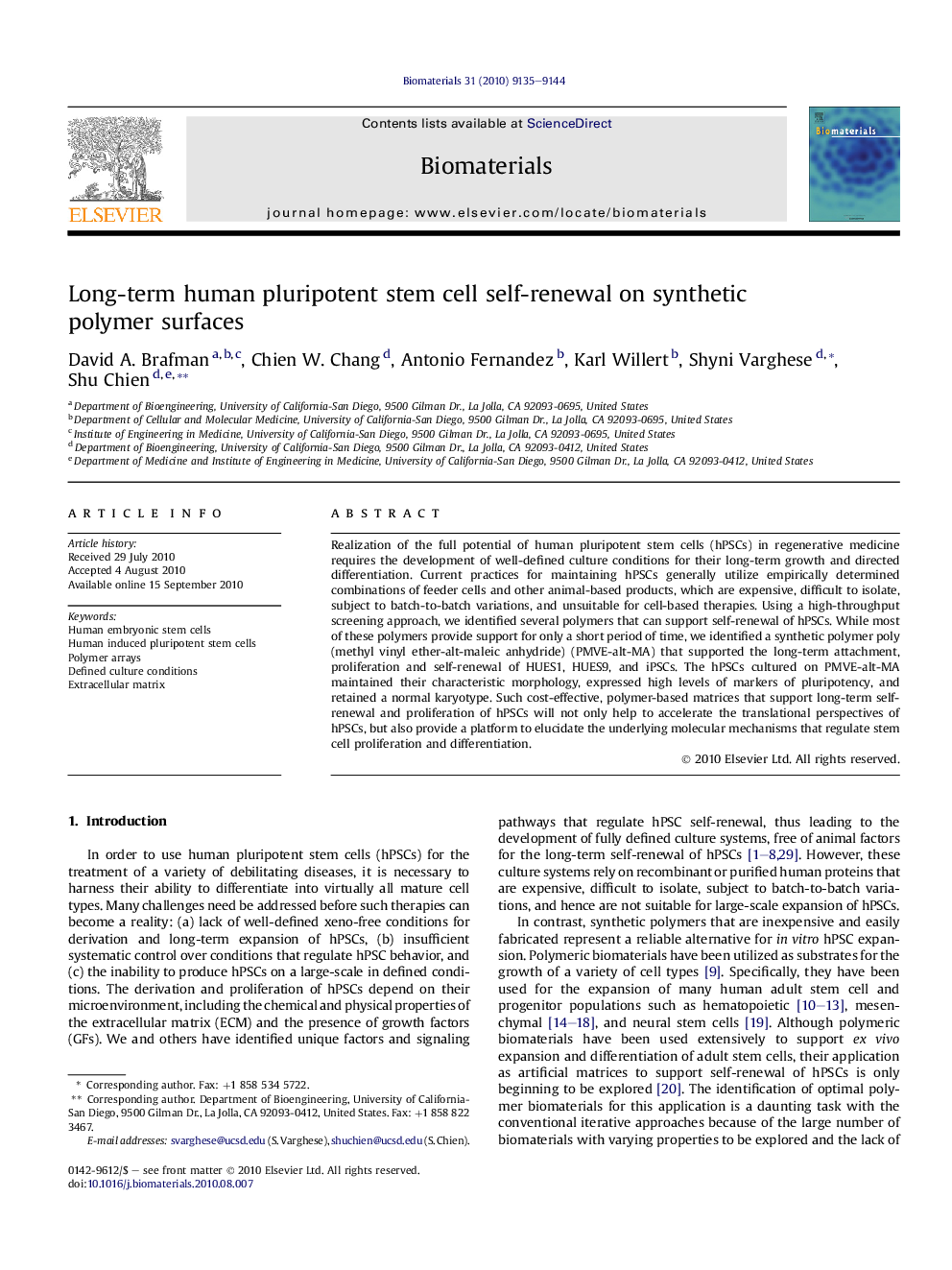| Article ID | Journal | Published Year | Pages | File Type |
|---|---|---|---|---|
| 8761 | Biomaterials | 2010 | 10 Pages |
Realization of the full potential of human pluripotent stem cells (hPSCs) in regenerative medicine requires the development of well-defined culture conditions for their long-term growth and directed differentiation. Current practices for maintaining hPSCs generally utilize empirically determined combinations of feeder cells and other animal-based products, which are expensive, difficult to isolate, subject to batch-to-batch variations, and unsuitable for cell-based therapies. Using a high-throughput screening approach, we identified several polymers that can support self-renewal of hPSCs. While most of these polymers provide support for only a short period of time, we identified a synthetic polymer poly(methyl vinyl ether-alt-maleic anhydride) (PMVE-alt-MA) that supported the long-term attachment, proliferation and self-renewal of HUES1, HUES9, and iPSCs. The hPSCs cultured on PMVE-alt-MA maintained their characteristic morphology, expressed high levels of markers of pluripotency, and retained a normal karyotype. Such cost-effective, polymer-based matrices that support long-term self-renewal and proliferation of hPSCs will not only help to accelerate the translational perspectives of hPSCs, but also provide a platform to elucidate the underlying molecular mechanisms that regulate stem cell proliferation and differentiation.
